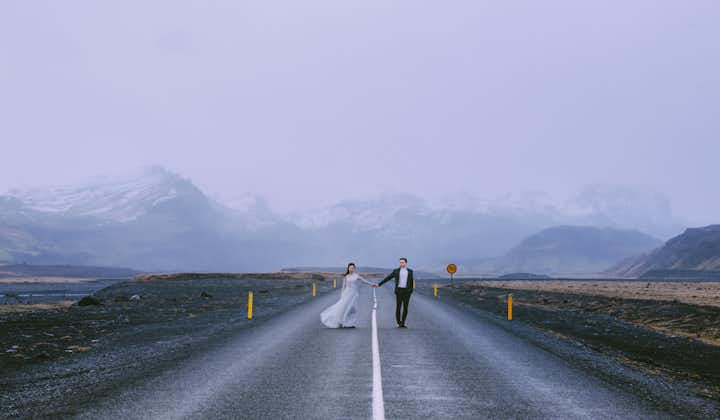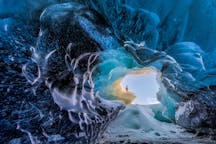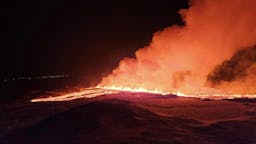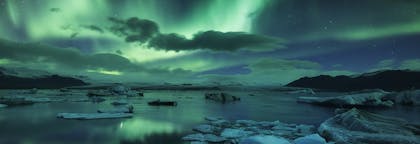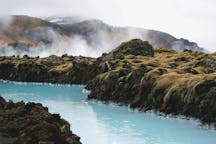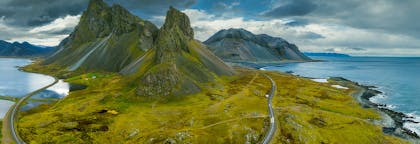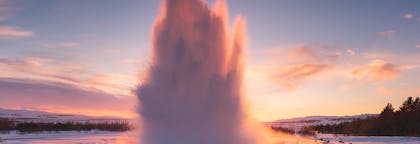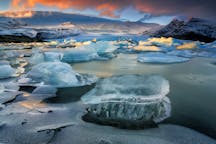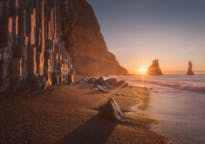描述
概括
描述
在冰岛旅游期间,拍一组梦幻纯美的婚纱照,私奔到世界尽头。冰岛本地摄影师跟拍,打造您的境外蜜月旅拍,极具个性化,文艺清新,与具备艺术感的冰岛大自然融为一体。极致的冰岛风景前,拥吻最爱的人。无论您是冰岛自由行还是自驾,您都将收获浪漫的欧洲纪念影集。
拍摄团队是一支集创意、美学于一体的冰岛本土摄影团队,团队成员皆毕业于冰岛艺术院校,在冰岛用丰富的摄影经验和独特的艺术视角,基于对冰岛本土环境的熟悉和东西方美学相结合,来打造与众不同的婚纱摄影,表达爱与冰岛气氛的融合,创作出有诗意有故事的场景。
摄影总监是毕业于冰岛艺术学院的华人,在冰岛居住多年,喜欢从不同的视角探索和发现冰岛的魅力,游历过冰岛的每一寸角落的她,善于运用光和影的结合,将创意融入到自然的构成中,对冰岛拍摄有着独到的见解;在色彩方面也一直致力于挖掘契合冰岛的最佳色调。她也被Instagram推荐为人气摄影师。人与自然的气氛融合是她的专长。
工作室的摄影师均能一对二的以工作室的风格完美的完成您的旅行写真,购买时请直接选择2人,工作室将尽快和您联系,一起沟通拍摄及出行等事宜。
拍摄行程从首都雷克雅未克出发,或是徜徉冰岛南部的雄伟的瀑布、广袤的苔藓、凝结远古时代的玄武岩、黑色的魔鬼沙滩,澄澈干净的冰川,或是领略雷克亚内斯半岛的悬崖峭壁,绿宝石湖泊森林,也能够穿梭在雷克雅未克这个色彩缤纷的城市。又或是沿海湾去往雪山半岛,领略冰岛缩影,在奇石怪滩还有壮阔的悬崖。相信一路上波澜壮阔的景色,加上变幻莫测的天气,都给予了全新的灵感,也能够带给您全新的体验。
以下三条可在一日内完成的拍摄线路,您可以随自己的喜好选择:
A-雷克亚内斯半岛
白雾茫茫的Krysuvik地热区;Kleifavatn清澄湖泊,途经Grænavatn绿宝石湖;到达Miðlína板块之桥。
B-冰岛南部海岸
斯科加瀑布 + 南部乡村教堂 + 玄武岩山洞 + Reynisfjara黑沙滩及周边
水雾蒸腾的斯科加瀑布;冰岛经典的乡村教堂;鬼斧神工天然排列的六棱柱玄武岩;黑的不可思议的魔鬼黑沙滩。
C-斯奈山半岛沿线
Buðir黑教堂 + 阿尔纳斯塔皮情人桥 + 海德纳尔悬崖礁石 + 斯奈山马场及沿线
在独具冰岛风格的布吉尔黑教堂许下誓言;在斯奈山冰川的见证下走过阿尔纳斯塔皮情人桥,惊涛拍浪的海德纳尔悬崖……
包含
建议携带
小贴士
由于婚纱摄影属于特殊产品, 与普通旅行团不同, 以下内容为该产品的取消条款:
1. 当工作室因为控制之外的原因(生病,受伤甚至死亡等)不得不单方面取消预约时,将会退给客户所付的全部款项,并出于道义推荐其他同行给客户,此后产生的费用或其他问题不应与工作室有关。
2. 客户拥有拍摄15天前无条件退全款取消的权利。当客户在拍摄前14天以内8天以上取消预约,可以收到全款80%的退款。当客户在拍摄前7天以内3天以上取消预约,可以收到全款20%的退款。当客户在3天以内取消预约,没有退款。
3. 在取消预约之前双方可以协商改期,即在适应浮来工作室的时间安排的情况下安排新的预约。所有费用将挪到新的预约时间里,取消条款则根据原来的预约时间计算。若双方协商改期失败,则参照取消条款安排退款。
4. 当天气恶劣时,工作室需和客人双方达成新的共识,商量改期或改拍摄地点。摄影师有权根据当天当时的天气等自然情况决定改变拍摄路线。如果因为极端天气完全无法拍摄也无法改期的情况下退全额,如果在可以更改路线的情况下客人不愿意出发则不予退款。
5. 制定计划过程中的图片仅为风格参考,最终出片以拍摄当时的实际情况为准则。
6. 所有照片版权将属于摄影师本人,摄影师有权用于作品宣传,如需获得版权则请与摄影师本人协商
7. 注意:此套餐不包含接送和化妆服务,如需要此类服务请和客服进行沟通,我们可以根据客户需求来推荐另行预定。
-交通:
本产品不包含摄影团队的交通,如果您在冰岛自驾游,则需搭载摄影团队(2人)在雷克雅未克集合点和最终目的地之间来回。
如果您离开雷克雅未克后将继续环岛旅行并不再回到雷市,您需要支付摄影团队差旅费,他们将自行驾驶另一台车为您服务后回城,具体价格和预约请直接与摄影团队联系。
如果您没有开车,您可以选择我们的附加服务,接送,接送范围仅在雷克雅未克,首都地区。
-化妆造型:
我们会联系本地熟悉亚洲面孔的化妆师来做造型,化妆+头发。请在拍摄前一晚留宿雷克雅未克,以方便化妆师早上到您的住所化妆。
具体价格和预约请直接与摄影团队联系。
真实评价
相似旅行团

将冰岛最大的旅行平台下载到您的手机上,在一个App中管理您的整个行程
使用手机摄像头扫描此二维码,点击链接,即可将冰岛最大的旅行平台添加到您的手机中。添加您的电话号码或电子邮件地址以接收包含下载链接的短信或电子邮件。
